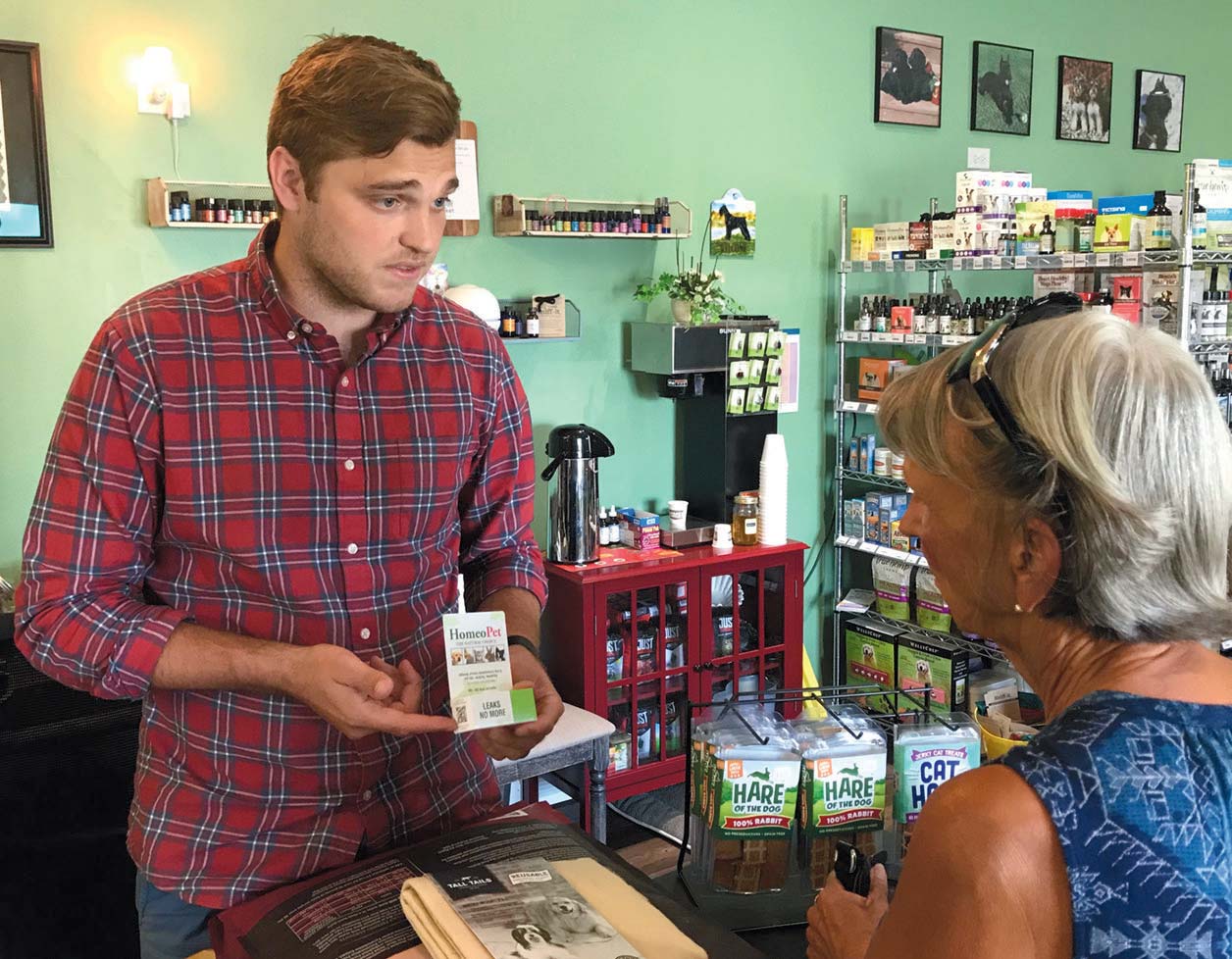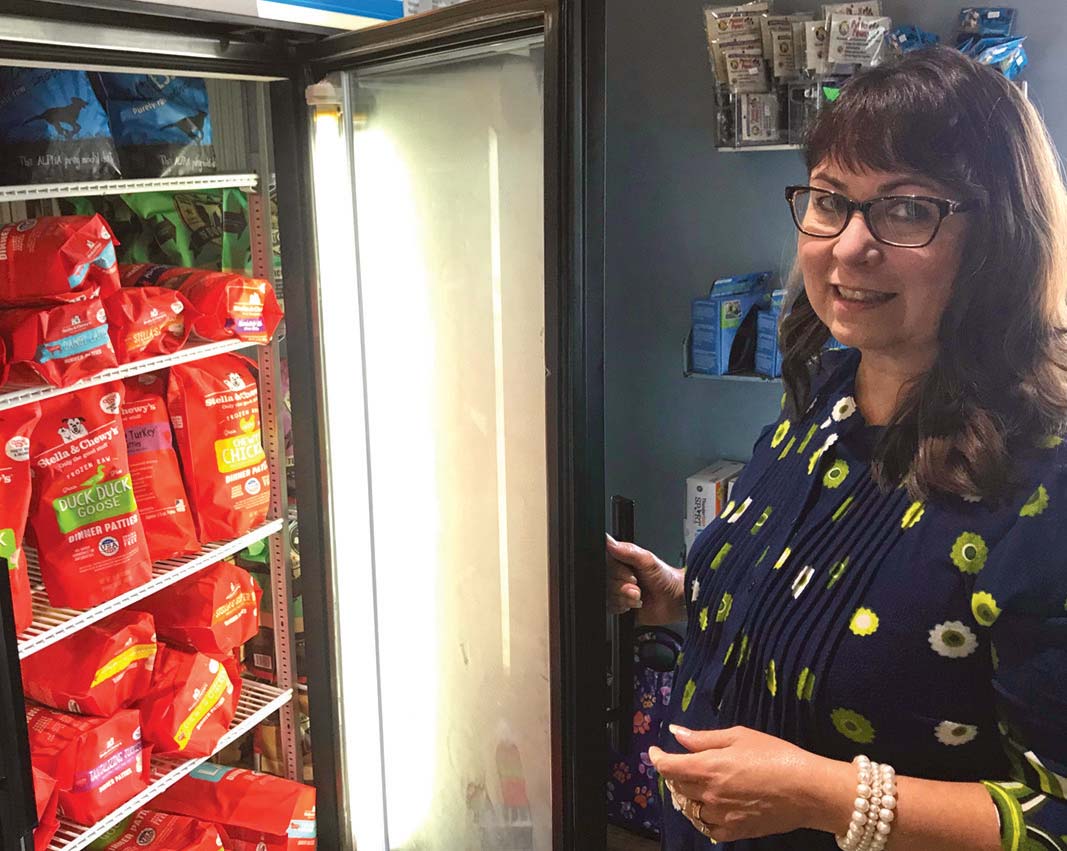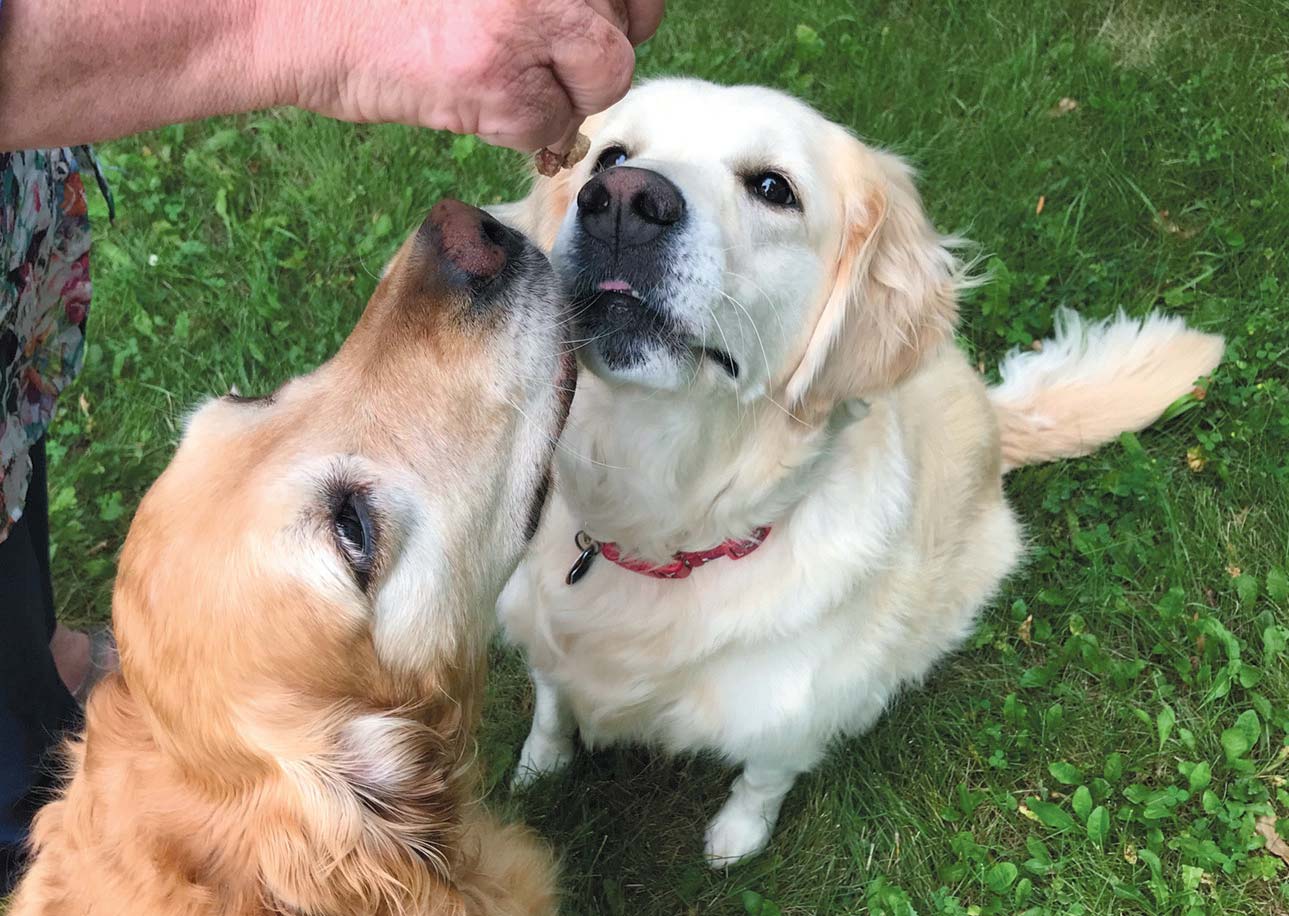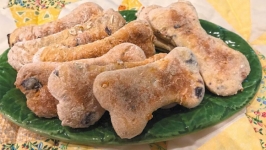Pets Benefit from Natural Foods, Too
IF YOU KNOW HOW TO LOOK, THE LABEL WILL TELL THE STORY OF WHAT’S GOOD FOR YOUR DOG AND CAT
Once upon a time, dogs and cats didn’t have big two-legged companions to feed and shelter them – and let’s face it, they survived for generation after generation just fine before some of their ancestors discovered life could be easier if they befriended humans.
Many of us have found that caring for our canine and feline friends is more complicated than simply grabbing a bag of the brand-name, mass-produced kibble that lines grocery store shelves. Our pets can get as fat and allergy-prone as any person who spends a little too much time eating fast food and processed stuff.
Improving pets’ health and lifestyle can be as simple as recalling what their ancestors ate.
“A dog’s digestive system is almost identical to ours in many ways – that’s why it’s important to feed them the highest quality food,” said Sarah Hoff, licensed veterinary technician and proprietor of Wet Nose Bistro, a natural pet foods, bakery and nutrition store in Bellevue just southeast of Green Bay.
Dogs are omnivores, but their mouth structure, the enzymes in their saliva and digestive tract, and their short intestinal tract make them designed to eat meat, adds Cheryl Larson, a certifi ed pet health consultant who owns Cheryl’s Healthy Pet Market on Green Bay’s west side.
“In the wild, ideally, they would catch a rabbit or a bird or a small animal – that would be a perfect meal. So we start by talking about what a rabbit offers our dogs,” Larson said. “Of course, cats are obligate carnivores (they’re designed to eat only meat), so that means that anything other than a mouse or a bird is a compromise to a cat.”
READ THE LABEL
“Proper nutrition for your dog simply starts with reading the ingredient label and identifying which ingredients are healthy and which ones to avoid,” Hoff said.
What should you look for?
“The first ingredient should be an actual named meat source – for example, whole deboned beef, chicken, lamb, salmon, turkey, beef meal, chicken meal, lamb meal, salmon meal or turkey meal,” Hoff said. “Also, fruits and vegetables, and healthy oils.”
At the top of the list of key ingredients to avoid is the generic word “meat.” If it’s a mystery what kind of meat they’re talking about, move on. “Non-descriptive proteins labeled as ‘meat,’ ‘meat meal,’ or ‘meat and bone meal’ – these are low-grade, low-quality anonymous protein sources,” Hoff said. “And avoid any type of ‘by-products,’ which are parts of the animal other than the actual meat itself such as blood, bone, spleen, kidneys, etc. The problem there is they may be sourced from dead, diseased or dying animals, or animals with tumors.”
Corn or wheat gluten is a starchy filler low in nutrients and high in carbohydrates, she said. Foods that are high in carbs put a dog at risk of developing diabetes and obesity.
“Corn has no nutritional value to your dog,” Hoff said. That includes corn syrup, which is added to make the food more palatable and may actually become addicting.

Bryan Schmitt of Cheryl’s Healthy Pet Market explains the benefits of a homeopathic product to customer Joni Ecke.

A wall of refrigerator units greets customers at Cheryl Larson’s Healthy Pet Market in Green Bay. Larson is an advocate for raw-food diets for our furry friends rather than mass-produced products that take short cuts to nutrition.
Soy is a cheap vegetable protein that is added as a meat protein substitute. Remember the part where our pets are carnivores?
“Dogs are not able to utilize or break down soy protein as effectively as meat-based protein,” Hoff said.
Other no-nos: artificial colors or flavorings (Red 40, Yellow 5 or 6, Blue 2, or 4- MEI found in many caramel colorings) and the preservatives BHT (Butylated Hydroxytoluene), BHA (Butylated Hydroxy anisole), ethoxyquin and propylene glycol.
GOING RAW
Larson takes the natural pet food diet a step further, advocating a raw food diet – going back to the dog’s rabbit and the cat’s mouse that they caught in the wild.
Consuming the entire animal gives them muscle meat, and organ meat in the proper ratio of secreting and non-secreting organs – liver, kidney, heart.
“Liver’s important for their liver health, kidneys are important for their kidneys, so if we’re feeding them a diet that doesn’t have those organs in, we’re stressing major internal organs,” she said.
Bone provides calcium and minerals in the proper ratio for bone health, and the part that doesn’t digest makes a firm stool and expresses the anal glands on the way out, Larson said.
Her interest in a raw food diet goes back 20 years to “a really sick giant schnauzer” that had allergies to food and the outdoors in general.
They had tried allergy shots, prescription foods, the proverbial whole nine yards. “Nothing worked; he was miserable.”
Their breeder was switching to raw and recommended it as a way to strengthen the dog’s immune system.
“In about six months I had a whole new dog,” Larson said. He still had seasonal allergies but overall he was much healthier and happier. Now all of her animals (two giant schnauzers, two miniature schnauzers, and five cats) eat all raw.
“They’re my test cases” for new products, Larson said. “We’ll feed it for a week, and if everyone does great, if everyone likes it and there are no digestive issues, it comes in the store.”
Cheryl’s Healthy Pet Market has a wall of freezers and coolers with a variety of meats as well as goat’s milk, which she describes as “a universal donor for all mammals, provides the enzymes, probiotics, complete nutrition.” Larson said she’s really picky about the sources in the kibble and other products she stocks.
“The vegetables are organic, the animals are antibiotic and hormone-free, free range, things like that,” she said. “I look for really clean foods, I look for companies that are really doing it right; they’re small companies that care about what they make, they’re producing really good quality food.”
She also recommends putting some variety in the menu rather than the same food in every meal.
“We wouldn’t eat the same thing day in and day out; it’s not natural, it puts all your eggs in one company’s basket – hopefully they got the recipe perfectly right, we’re going to depend on that,” Larson said. “Instead, if you take 4-5 different brands and 4-5 different proteins, now you know over your pet’s lifetime they’re getting a variety of nutrients from a variety of sources, and should any one company have trouble – and any one company could – your dog isn’t as susceptible because they haven’t been living on it.”
Hoff and Larson stock Wisconsin companies’ products as much as possible. Wet Nose Bistro carries Fromm Family Food, which is based in Mequon, and its freeze-dried treats are locally made specifically for the store.
The Healthy Pet Market features Oak Creek-based Stella & Chewy’s as well as treats from Vital Essentials of Green Bay and Momentum Carnivore Nutrition in Manitowoc.
“We want to make sure first and foremost that it’s clean and they’re doing it right,” Larson said, “but if we can support a local industry, that’s significant too.”
Switching to natural or even raw-food diets is not a difficult transition, the two women said.
“It’s when you jump up and down in quality that you see problems,” Larson said. “The big thing I like to let people know is that we’re here to help them work through the process, so if there’s something they’re looking for, something they feel frustrated dealing with, we’ll help them.”





